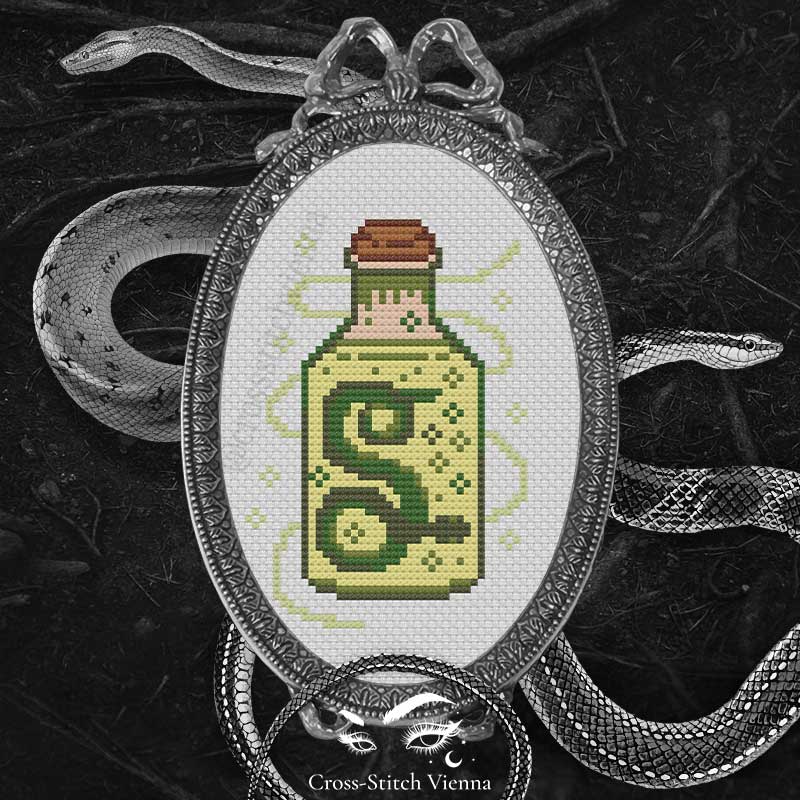



*Note: In the finish photos, DMC 543 (beige bottleneck colour) was swapped for 928.
Pattern info
14 ct 40×58 Stitches (7,3 x 10,5 cm) (2,9 x 4,1 in.)
16 ct 40×58 Stitches (6,3 x 9,2 cm) (2,5 x 3,6 in.)
18 ct 40×58 Stitches (5,6 x 8,2 cm) (2,2 x 3,2 in.)
Pattern Keeper compatible
This chart has been tested and verified to work with Pattern Keeper by the designer. Cross-Stitch Vienna is not affiliated with Pattern Keeper. Please note that Pattern Keeper does not currently support backstitch reading! You will need to follow the PDF for the backstitch guide.
Download info
This is a digital PDF pattern only. The PDF contains the following versions:
- colour blocks with symbols,
- symbols in black and white only
- Pattern Keeper compatible chart.
- PLEASE NOTE that sometimes it was not possible to include the Pattern Keeper chart in the same PDF as the main chart (it was preventing PK from rendering the PDF in-app) – in such cases a direct download link was added in the notes on the cross-stitch key page. Upon clicking on it, you will receive a separate PDF with the chart in the Pattern Keeper format.
Please note that if you bought this item, no refunds will be made after purchase as it is a digital file. Terms and Conditions & copyright info: crossstitchvienna.at/terms-conditions
“Clark Stanley’s Snake Oil Liniment promised “A Wonderful, Pain-Destroying Compound to Cure Lameness, Rheumatism, Toothaches, and Sprains.” Advertising for The Elixir of Life claimed it would cure any disease known to the human body and boldly promised long, and perhaps eternal, life.”
Marketing Rebellion: The Most Human Company Wins by Mark Schaefer
I recently listened to a short episode by Stuff You Should Know (a phenomenal podcast!) about snake oil. Apparently, what used to be a potent and trusted medicine in the Chinese culture, was appropriated by an American with a surplus of rattlesnakes and subsequently messed up. This is why we can’t have nice things!
The Chinese railroad workers who immigrated to the States brought with them their reliable snake oil, which later ended up on the radar of the industrious Clark Stanley.
Clark, the self-appointed “Rattlesnake King,” began selling the concoction as an all-purpose healing aid around 1893. He also made a show out of it – he would travel the United States in his cowboy getup and produce the oil fresh in front of the crowds, part of the infamous “medicine shows”.
The original snake oil was made from Chinese water snakes, which were chock full of omega-3 acids and have been known to help with things like arthritis and other muscle and joint pain. Rattlesnakes, on the other hand, only have a little over eight per cent of the acid. But that is not the problem main here.
“A 2007 story in Scientific American explains that California neurophysiology researcher Richard Kunin made the connection between Chinese water snakes and omega-3 fatty acids in the 1980s.
Kunin visited San Francisco’s Chinatown to buy such snake oil and analyze it. According to his 1989 analysis published in the Western Journal of Medicine, Chinese water-snake oil contains 20 percent eicosapentaenoic acid (EPA), one of the two types of omega-3 fatty acids most readily used by our bodies. Salmon, one of the most popular food sources of omega-3s, contains a maximum of 18 percent EPA, lower than that of snake oil.”
How Snake Oil Got a Bad Rap (Hint: It Wasn’t The Snakes’ Fault) by Lisa Hix
By the way, rattlesnakes were not unheard of in traditional medicine. They were commonly used for medical treatments in Mexico – “rattlesnake pills have been indicated for curing a wide variety of ailments, including: skin blotches, cancer, sores, rashes, pimples, welts, itching, rheumatism, varicose veins, face blotches, acne, blackheads, stress, heart disease, diabetes, hemorrhoids, and sexual impotence” (Rubio in his paper Rattlesnake: portrait of a predator, 1998).


Image left: An advertisement for Clark Stanley’s Snake Oil Liniment, Worcester, Massachusetts, c. 1905. National Library of Medicine
Image right: An original glass bottle for the miracle cure with “CLARK STANLEY / SNAKE OIL LINIMENT” in embossed letters, produced circa 1890. National Museum of American History.
Unfortunately, Clark’s illustrious career came to a halt in 1916 when it was found that his snake oil was very snake-lacking – it was found to contain mineral oil, a fatty compound thought to be from beef, capsaicin from chilli peppers, and turpentine. However, it was said in one of the articles that very likely the people, who attended the medicine shows were lucky enough to have snakes in their oil on account of the type of exhibition Stanley used to put up. I am not quoting it here verbatim but it involved live production of his product. Once the list of ingredients was revealed, he was fined $20.00 for all his trouble – the equivalent of about $430 (£280) today. If he truly scaled real rattlesnake oil instead of a weird cocktail, this business could have had potential.
Today, the term “snake oil” is a euphemism for ineffective or fraudulent products, particularly those marketed as medicines or cures. This quick pattern is my tribute to the meaning of the phrase snake oil. It’s bright and green, with the snake breathing out bubbles in his cosy little bottle of oil. Enjoy!
Resources referenced in this post:
- Pic [1] – An advertisement for Clark Stanley’s Snake Oil Liniment, Worcester, Massachusetts, c. 1905. National Library of Medicine. https://www.nlm.nih.gov/exhibition/ephemera/medshow.html
- Pic [2] – An original glass bottle for the miracle cure with “CLARK STANLEY / SNAKE OIL LINIMENT” in embossed letters, produced circa 1890. National Museum of American History. https://americanhistory.si.edu/collections/nmah_1298331
- Short Stuff: The Original Snake Oil Salesman | STUFF YOU SHOULD KNOW – https://www.youtube.com/watch?v=HYLfQVA4VWA
- Ruining Snake Oil: A Brief History of Fraud – https://imhm.org/blog/10252600
- How Snake Oil Got a Bad Rap (Hint: It Wasn’t The Snakes’ Fault) – https://www.collectorsweekly.com/articles/how-snake-oil-got-a-bad-rap/
- Wikipedia entry on snake oil – https://en.wikipedia.org/wiki/Snake_oil
- The history of snake oil by Andrew Haynes – https://pharmaceutical-journal.com/article/opinion/the-history-of-snake-oil
- A History Of ‘Snake Oil Salesmen’ by NPR – https://www.npr.org/sections/codeswitch/2013/08/26/215761377/a-history-of-snake-oil-salesmen
- Fun Fact: What Was Snake Oil Used to Treat in the American West in the 19th Century? – https://www.pharmacytimes.com/view/fun-fact-what-was-snake-oil-used-to-treat-in-the-american-west-in-the-19th-century
- Marketing Rebellion: The Most Human Company Wins by Mark Schaefer – https://businessesgrow.com/rebellion/


